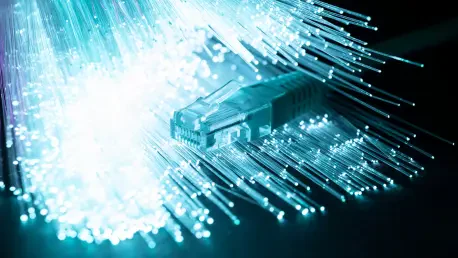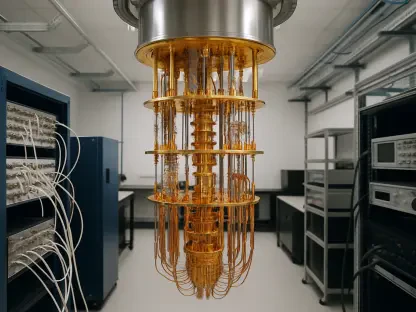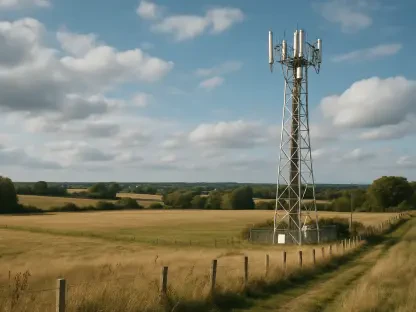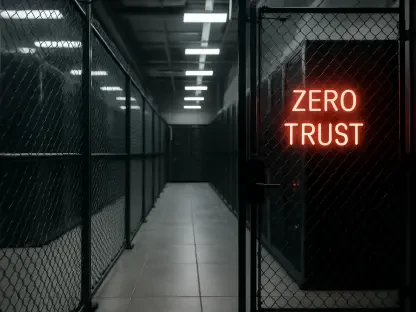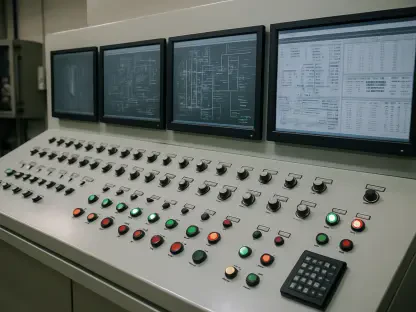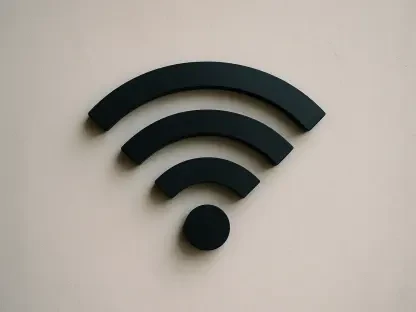What if the backbone of the digital world, data centers, could slash their environmental impact with something as fundamental as the cables connecting their systems? As the demand for data processing skyrockets with artificial intelligence and high-performance computing, these facilities consume vast amounts of energy, contributing heavily to global emissions. Yet, hidden beneath the focus on cooling systems and renewable power lies an unsung hero: fiber infrastructure. This critical component could redefine how sustainability is approached in the industry, offering a path to reduce waste and energy use in ways previously overlooked.
Why Fiber Could Be the Key to Greener Data Centers
The significance of this topic cannot be overstated. Data centers underpin everything from cloud services to streaming platforms, but their environmental footprint is staggering, often rivaling that of small nations. With companies facing mounting pressure to meet net-zero targets, every element of design and operation must be scrutinized. Fiber infrastructure, typically seen as a mere conduit for data, holds untapped potential to curb emissions and enhance efficiency, making it a vital piece of the sustainability puzzle. Exploring its role reveals not just technical advancements but a broader shift toward holistic environmental strategies.
The conversation around sustainability has long centered on high-profile solutions like solar panels or advanced cooling. However, the cabling that links servers and systems quietly influences both energy consumption and material waste. By rethinking how fiber is designed and deployed, data centers can address challenges that go beyond surface-level fixes. This perspective challenges conventional thinking, positioning fiber as a strategic asset rather than a background necessity.
The Mounting Environmental Challenge for Data Centers
Data centers are under intense scrutiny as their energy demands surge. Reports from major tech firms indicate a sharp rise in emissions, with some noting a 51% increase over just a few years starting from 2025. This spike, driven by the computational needs of AI and high-performance workloads, shows no signs of slowing. The urgency to mitigate this impact is clear, as these facilities must balance growth with planetary responsibility, pushing innovation into every corner of their operations.
Beyond direct energy use, indirect emissions—known as Scope 3—pose an even larger hurdle, often accounting for over 70% of a company’s carbon footprint. These include impacts from supply chains and equipment lifecycles, areas where traditional sustainability efforts fall short. Fiber infrastructure, as a foundational element, offers a chance to tackle these less visible but critical contributors to environmental harm, broadening the scope of what green design can achieve.
A shift in focus is necessary to address this complex issue. While power optimization remains essential, the industry must look at systemic solutions that reduce reliance on frequent hardware upgrades and wasteful materials. This is where fiber steps in, providing a less obvious but impactful avenue for change, especially as data demands continue to escalate.
How Fiber Infrastructure Cuts Emissions Under the Radar
Delving into the specifics, fiber infrastructure reveals multiple ways to enhance sustainability. Thoughtfully designed systems can support evolving technologies, avoiding the need for replacements every few years. By maintaining tight optical loss budgets as data speeds climb from 10 to 400 gigabits—and soon beyond—signal degradation is minimized, extending the life of critical equipment and reducing resource strain.
Material efficiency also plays a significant role. Innovations such as Alignment Independent Multifiber (AIM) cabling reduce plastic waste by replacing bulky components with compact adapter plates, directly addressing indirect emissions. Additionally, direct mating breakout connections further cut down on unnecessary materials, aligning with efforts to shrink the environmental footprint of data center supply chains.
Space and power savings round out the benefits. Very Small Form Factor (VSFF) transceivers pack double the fiber into a single rack unit—192 fibers compared to 96—reducing the need for additional racks and cooling. These compact solutions also lower power draw by consolidating older, less efficient units, demonstrating how small design shifts can yield substantial energy reductions.
Voices from the Field: Fiber’s Real-World Sustainability Wins
Industry experts are increasingly vocal about fiber’s potential. Technical analyses highlight how AIM cabling achieves near-lossless performance, allowing systems to handle AI-driven workloads without constant overhauls. One data center engineer noted, “Switching to advanced fiber designs has cut our upgrade cycles significantly, saving both cost and carbon.” Such feedback underscores the practical value of these innovations in high-stakes environments.
Real-world examples add weight to these insights. Operators adopting VSFF transceivers report not only a smaller physical footprint but also noticeable drops in cooling expenses. A facility manager shared, “The reduced heat output from compact transceivers has lowered our energy bills more than expected.” These anecdotes reflect a growing recognition that cabling choices impact far more than just connectivity—they shape sustainability outcomes.
The broader industry narrative supports this shift. Environmental reports from tech giants reveal alarming emission spikes, with some seeing an 11% jump in a single year starting from 2025, despite ambitious green pledges. This data emphasizes the need for solutions like fiber advancements, which offer measurable benefits across both operational and supply chain impacts, reinforcing their strategic importance.
Actionable Steps to Harness Fiber for Sustainable Design
For data center managers aiming to integrate fiber’s benefits, practical strategies can pave the way. Investing in AIM cabling ensures minimal signal loss and supports higher speeds over extended periods, reducing the frequency of replacements. Prioritizing systems with ample optical headroom prepares facilities for future tech leaps without environmental trade-offs.
Optimizing space is another key move. Deploying VSFF transceivers doubles fiber density per rack unit, cutting down on physical infrastructure and associated cooling demands. This directly translates to lower energy use, aligning operational efficiency with sustainability goals while maintaining performance standards.
Reducing material waste and extending reach complete the approach. Transitioning to direct mating connections and smaller adapter plates minimizes plastic use, tackling Scope 3 emissions. Meanwhile, extended distance fiber solutions lessen the need for signal-boosting hardware, trimming both costs and ecological impact. Together, these steps transform fiber from a passive element into a cornerstone of green data center design.
Reflecting on Fiber’s Role in a Sustainable Legacy
Looking back, the journey to integrate fiber infrastructure into sustainability efforts marked a turning point for the data center industry. It became evident that addressing emissions and waste required looking beyond traditional solutions to embrace the potential of every component, no matter how subtle. The innovations in cabling design proved that even small changes could ripple outward, creating significant environmental gains.
As the path forward unfolded, the focus shifted to scaling these advancements. Industry stakeholders began prioritizing partnerships to develop even more efficient fiber technologies, ensuring that data centers could keep pace with demand without sacrificing green commitments. The challenge was clear: continue refining these strategies to build facilities that not only powered the digital age but also protected the planet for generations to come.
Ultimately, the momentum gained from prioritizing fiber infrastructure set a precedent. It encouraged a mindset of innovation across all facets of data center operations, urging designers and operators to seek out hidden opportunities for impact. The next steps involved investing in research and collaboration to push the boundaries of what sustainable design could achieve, ensuring that every connection counted in the fight for a cleaner future.
